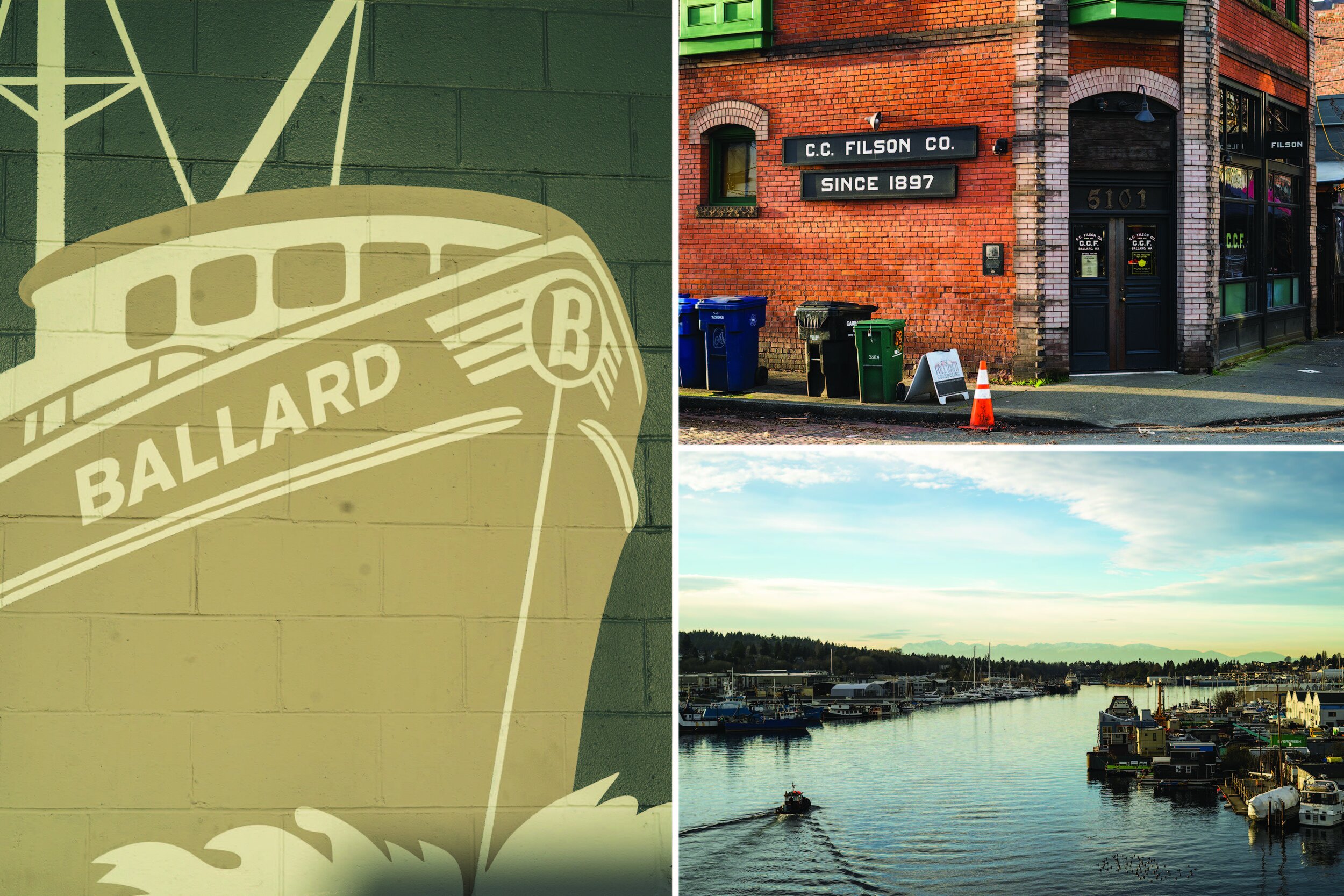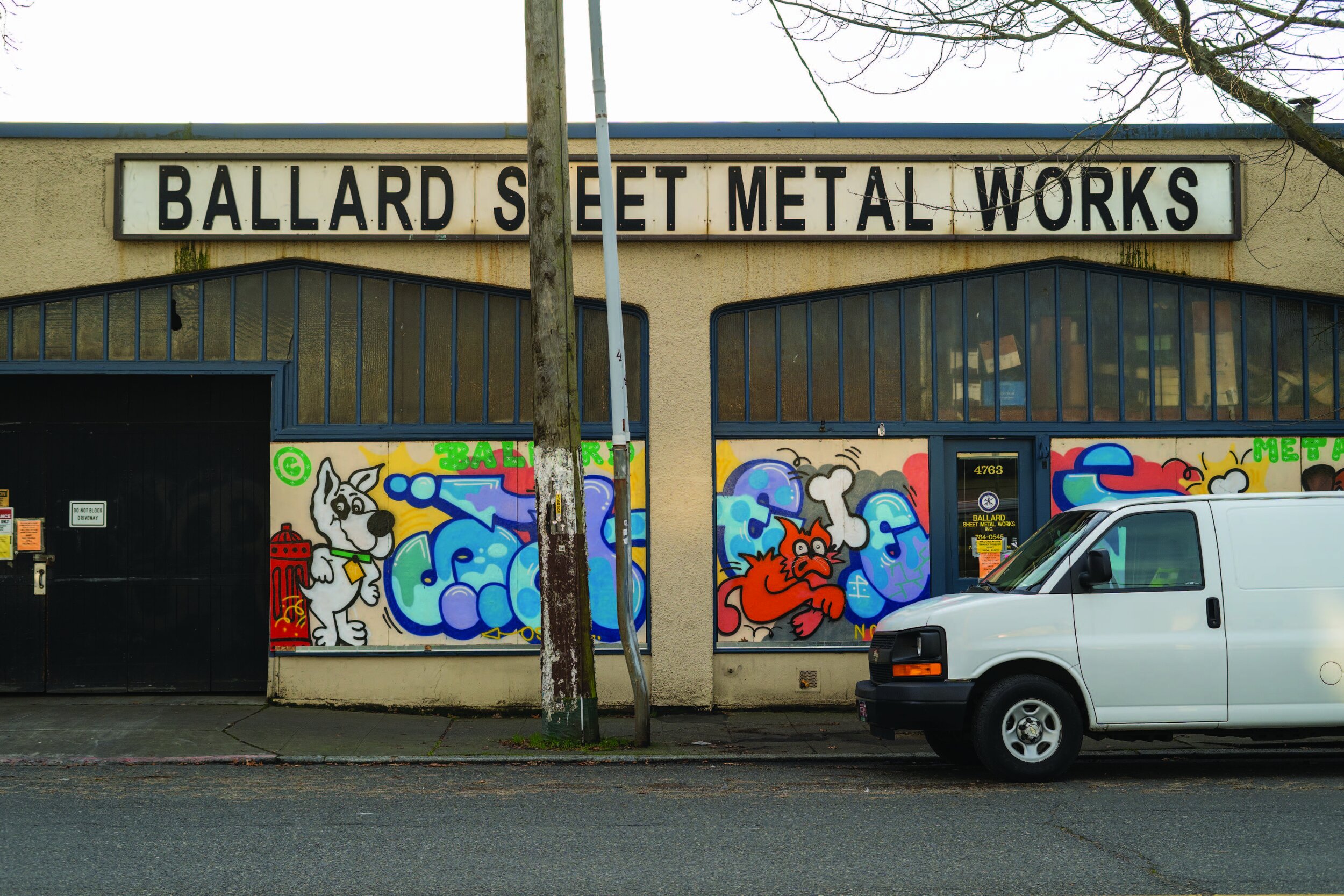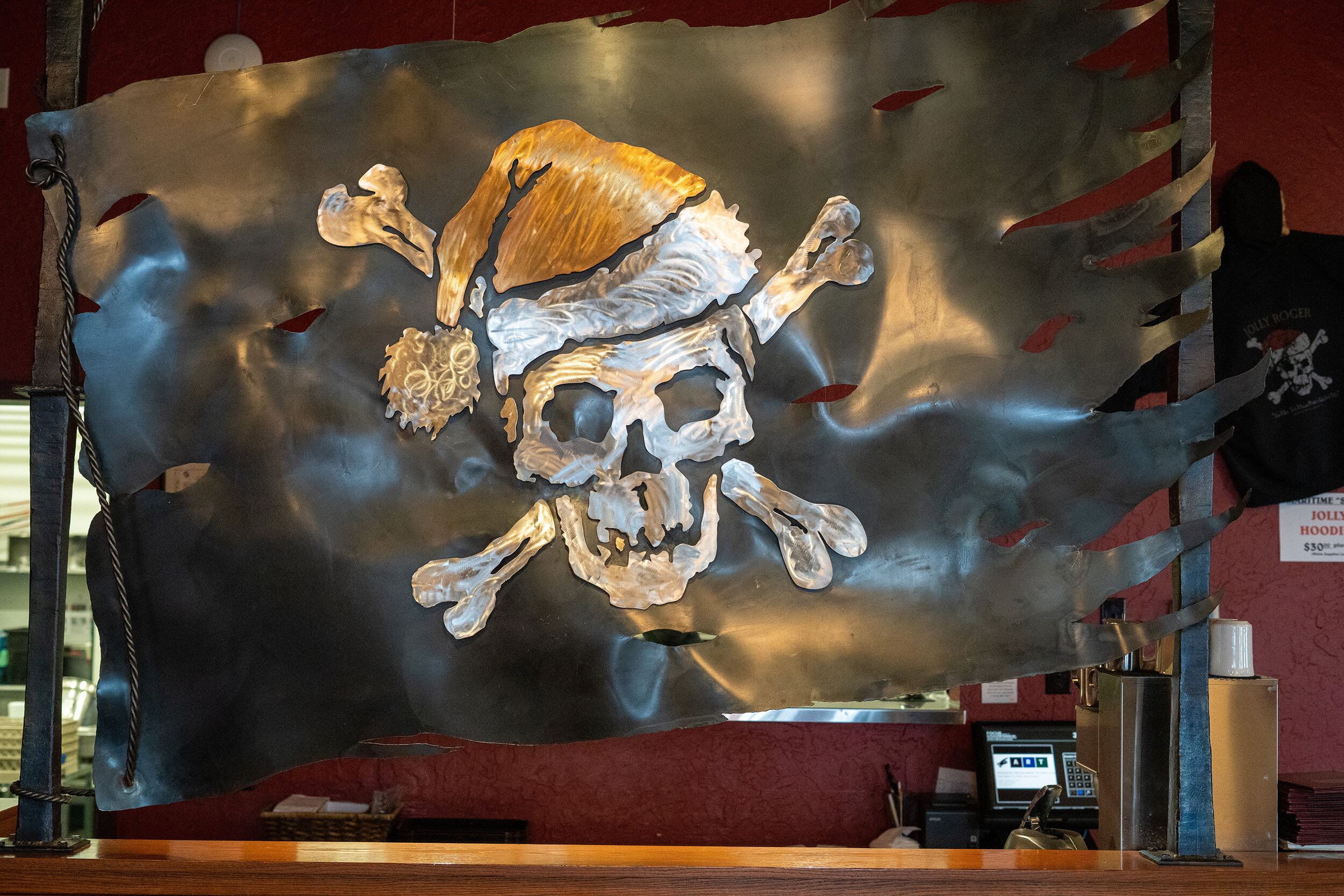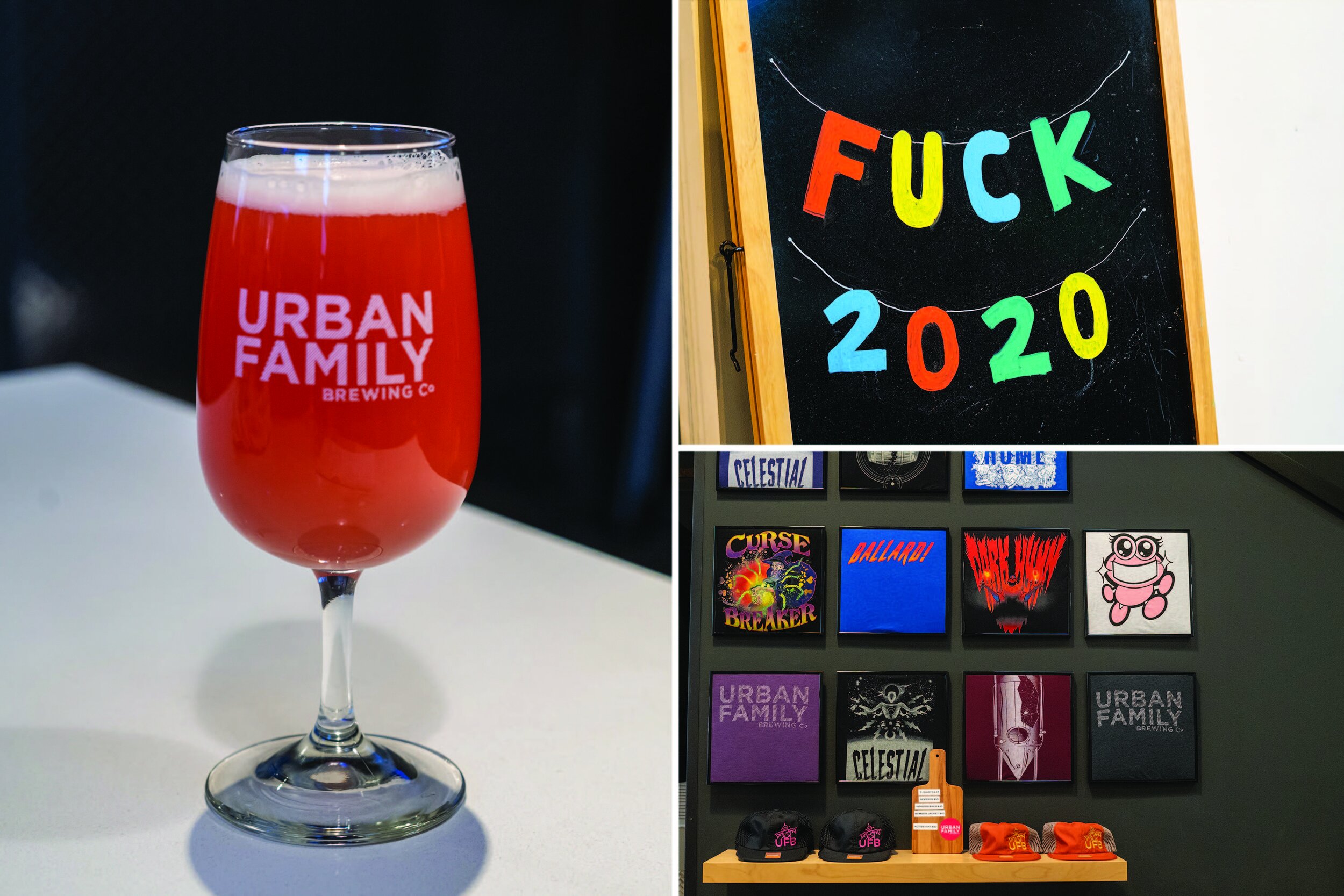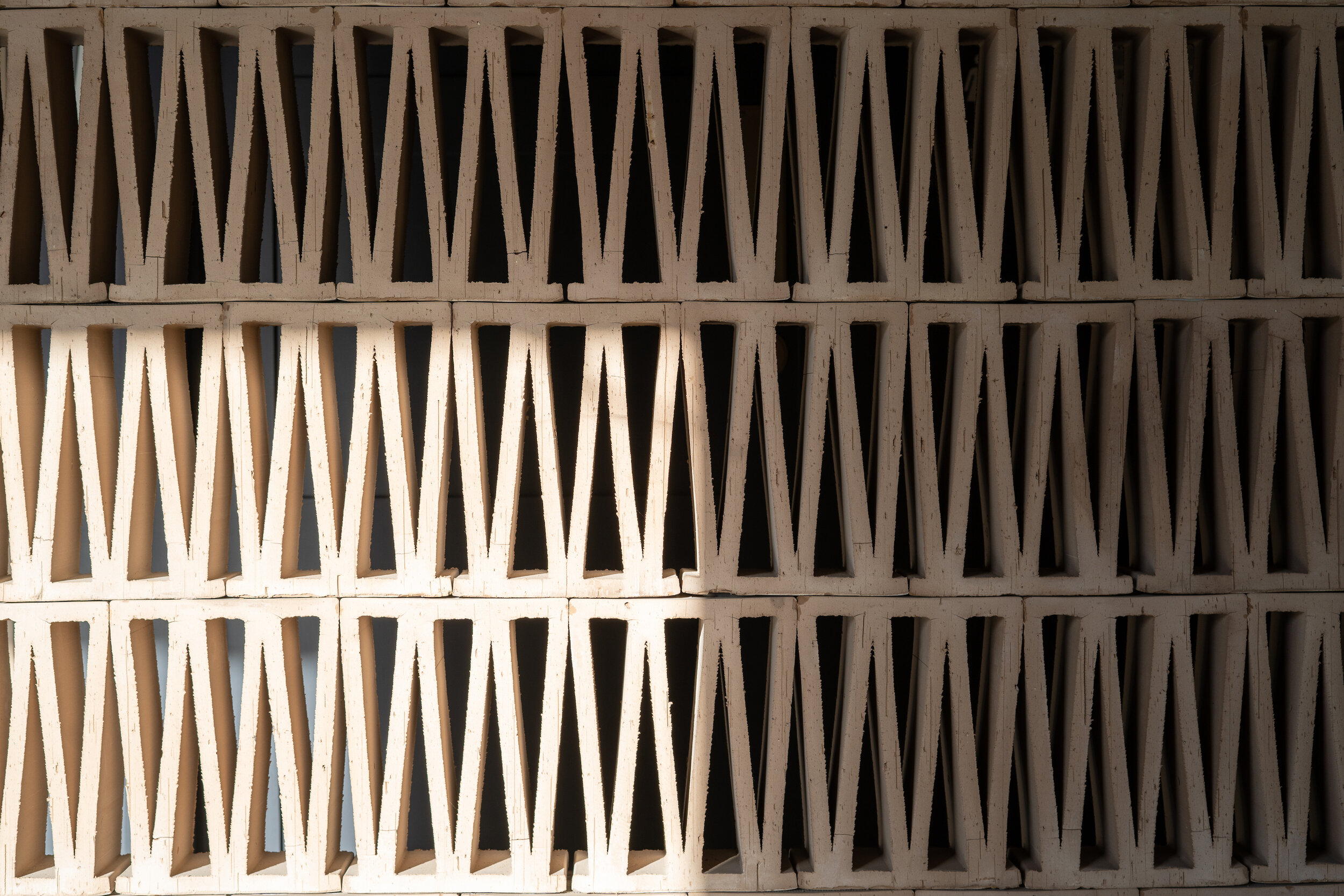The Ballard district of Seattle started as a loser’s bet.
Back in 1887, nobody wanted these 160 acres of “undesirable,” logged land hugging the Shilsole and Salmon Bays, just a few miles northwest of present-day downtown. They became the property of Captain William Rankin Ballard, but only after he lost a coin toss with Captain J.A. Hatfield. The two were dissolving an unprofitable partnership, the acreage payment from a cashless customer to their failed store.
But Captain Ballard was a master of reinvention. Since there were no more trees to log, he brought in lumber mills, and turned the shores into the roofing-shingle capital of America. In turn, the mills drew settlers—and Ballard turned his “loss” into a $1,000-an-acre win, 160 times over.
Today, seagulls still sail on the salty breeze that rolls off the gray water, the same way they did at the turn of the 20th century, when economic and political unrest in the Nordic countries prompted a mass exodus to the United States. Fishermen and their families found a sense of familiarity in Ballard, which became its own city in 1890, shaped in the immigrant image. But by 1907, local municipal services couldn’t keep up with its growth, and Ballard was annexed by Seattle.
At the time, Ballard City Hall sat in black crepe-draped mourning, the flag at half-mast. Yet Ballard the neighborhood refused to die, resisting absorption by the big city and retaining an independent streak. In my youth, it was synonymous with warehouses, Danish bakeries, old people, and traffic that backed up for miles on the two-lane Ballard Bridge. Today, Ballard still shows its seafaring roots and Scandinavian heritage. But it has risen anew, with the same autonomous, entrepreneurial spirit that marked its founding.
In 1990, George Hancock landed in Captain Ballard’s old stomping grounds and opened Maritime Pacific Brewing Company. Like the captain’s lumber mills, his brewery’s growth attracted others who found a home in this unlikely place, amidst the ruins of boat-repair and auto shops, and in 2012, a wave of brewers began washing in. In its most recent incarnation, the neighborhood encompasses the Ballard Brewery District, where 12 of the city’s best breweries cohabitate within a walkable, one-mile radius.
Each brewery tells a unique piece of Seattle’s story. I decided to highlight six over several socially distanced outings.
It doesn’t rain in Seattle the way people think it does, in a steady downpour. More often, a fine mist leaches from a mottled sky and hangs in the atmosphere, settling upon jackets and clinging to eyelashes.
This is the weather today, as fellow GBH contributor Dave Riddile and I huddle under one of the big, white tents outside Lucky Envelope Brewing. At 9:30 a.m., the door opens, and we are greeted by co-founders Raymond Kwan and Barry Chan.
Before they take us on a masked tour of the facilities, we try the Parti Kyle Pub Ale. The beer’s name comes from the fact that it was brewed from the parti-gyle runnings of Lucky Envelope’s Imperial Stout, and it tastes toasty, with a subtle, chocolate-caramel sweetness and hint of hazelnut—surprisingly supple for a 3% Dark Mild. As we walk, I notice the tasting room has been converted to a to-go thoroughfare, with a tap list mounted next to a Plexiglas walk-up window. The tanks are adorned with cats and Super Mario stickers.
The founders recall how they got here, warm yet resolute as another year begins in the pandemic’s inverted world. Chan, the brewmaster, is mellow, friendly, and a true beer nerd. Kwan, the director of operations, is passionate and mission-driven, the idea guy. Theirs is the quintessential origin story: After meeting through friends, they quit the corporate world and decided to open their own beer business.
Kwan and Chan’s love for what they do shows in their fond anecdotes of the early days. I watch the way Kwan comes alive when describing flavors, and take in Chan’s impassioned discourses on new experiments. But what truly drives them is creating, as their tagline says, “culturally inspired beer.”
Asians and Asian-Americans are the largest ethnic group in Seattle outside its Caucasian majority. Chinese people were the first, in the mid-19th century, to migrate here in large numbers; Japanese and Filipino people followed. These immigrants built the industries and transportation networks of the Pacific Northwest, leaving their culture, too, permanently imprinted upon the region, including art and design—but now especially food and beverage.
Both Chan and Kwan are Chinese-American, part of a 1.9% minority of Asian brewery owners in the overwhelmingly white craft beer market. Realizing that nobody was telling their story, it became their mission, Kwan says, to “introduce our culture to people, using modern and historical brewing techniques and ingredients, but adding things that impacted our lives.”
The name of the brewery reflects a Chinese New Year tradition, when elders give red “lucky envelopes” of money to younger generations. The crimson color brings health and wards off evil, while the money invites prosperity.
Kwan frequently visits family in Hong Kong. From there, via text, images of menus, dishes, and cocktails fly back to Chan and the team. Ingredients then pop up in test batches and on the tap list: tea leaves, elderflower, or, in the case of their popular summertime seasonal, Two Pepper Pale Ale, habañero and shishito peppers. They even tried a ramen beer once. “It was horrible,” Chan laughs.
Seattle was a different world when I was growing up. I used to take the 271 bus to the U District and wander from streets papered with damp cigarette butts and concert fliers into record shops and vintage stores, sipping coffee and cultivating detachment.
The city seems to have been under construction my whole life, working through an endless cycle of bubbles and bursts as orange cranes multiplied on the horizon. Over the decades, nearly everything changed, from the climate—sunnier, warmer, and drier—to the cityscape and citizenry. Big Tech giants bulldozed the old city to build monuments to themselves; restaurant moguls grew their empires; and mildew-scented midcentury houses yielded to interchangeable, mixed-use apartments with gyms and happy-hour spots in their bowels.
“People would say, ‘Why are you even open?’ And it’s for the same reason I got into it. It’s about the love of what you’re doing, and the crew that has been with me for a long time. If it was about the bottom line, we’d have shut our doors a long time ago.”
As of 2018, Seattle was the fastest-growing major U.S. city of the decade. This trend started with Microsoft in the early 1990s, but when Amazon built its sprawling corporate headquarters in 2010, it spawned an entire ecosystem of high-rise apartments and upscale dining and drinking spaces (many of which permanently shuttered in the pandemic). The pattern was replicated throughout the city, and by 2017, the median rent had skyrocketed by 41.7%—more than double the 17.6% nationwide increase during the same period.
Rents in Seattle are now the highest in the nation outside California, driving native-dwellers ever farther north and south. Even neighborhoods that were once more affordable, such as Columbia City in South King County, are rapidly being gentrified, pricing out the people who built communities there. Many small-business owners and service-industry workers of all backgrounds can no longer afford to live in the very neighborhoods where they wait on Big Tech transplants.
Today, the demented, Old-Seattle sideshow whimsy of my youth has all but disappeared, banished to the dusty shelves of Pike Place Market’s lower-level shops, amidst glass-mounted tarantulas and imported Buddhas. I see glimpses of it at Ye Olde Curiosity Shop on the Central Waterfront, where an actual mummy terrifies children. But even historic Ballard Avenue is now lined with self-conscious boho-chic boutiques and suspiciously slick alt-country outfitters.
However, it’s easy to cast the old city in an unrealistically rosy hue, and not all of the change has been negative. Some of the construction has been reinforcing our city for The Really Big One, and the bar and restaurant boom of the 2010s supercharged the innovation and creativity of the dining and drinking scene.
Still, “the city is catering to the younger crowd,” says Hancock of Maritime Pacific, the District’s first brewery. “With that, there is a give and take, and unfortunately, old Ballard is gone.”
He’s right: In 2018, one in three Seattle residents were between the ages of 25 and 39, a 70,000-person increase in this demographic since Amazon’s arrival. Hancock recalls when you could leisurely stroll back and forth across Leary Way, the now-congested thoroughfare where his brewery lies—back when no Ballard building was taller than three stories and “the beer scene was geeky, not trendy.”
But from death comes new life, and the Ballard Brewery District is sustained by a spirit of collaboration between owners and patrons. This takes on new meaning now, when 1,023 bars and restaurants in King County have permanently closed since the pandemic began, and when a socially distanced pint can feel like a lifeline to humanity.
“Any business that situates itself in such a densely populated residential area needs to remain grounded and connected with the community,” says Lucky Envelope’s Kwan.
For 31 years, Hancock has led a motley crew of staff and patrons through Seattle’s squalls. He calls himself the “old curmudgeon” of Ballard’s breweries, and Maritime Pacific, plus its Jolly Roger Taproom, fittingly bears that motto of entrepreneurship: “It’s better to be a pirate than join the navy.”
His brewery is a rarity, including a full-service restaurant—the very business model most decimated by COVID-19 shutdowns, the first of which began in Seattle on March 26, 2020. Today, the dining room lies empty, revealing a detailed, floor-length nautical map. Jolly Roger flags stand against brick-red walls. Stare too long into the mirror behind the taps, and you may conjure fishermen’s ghosts. The wood-paneled bar is now a walk-up window, and parking-lot tents house loyal patrons huddled near spitting propane heaters. It’s like a Disney pirate ship collided with a British pub, in Old Seattle style.
Hancock opened the brewery in 1990, in a converted transmission shop in the old industrial zone (where Peddler Brewing Company now resides). “My father owned a business in Ballard, and my wife and I lived on a sailboat here,” he says, but there were no other breweries at the time. Redhook Brewery had opened in 1981, but relocated in 1987. Hale’s Ales Brewery & Pub moved to Ballard from the Kirkland suburb in 1995, but the two would stand alone for more than 20 years.
In 2000, Hancock hired a chef, and they moved into their current location at Ballard’s easternmost edge. As I do every year, I drink the Jolly Roger Christmas Ale during our wintry visit: The English Strong Ale is malty and full-bodied, with boozy sweetness and notes of raisin and spice. Maritime has 14 taps, including three British beer engines. Half of these pour the brewery’s core range of German, English, and American styles, including the aptly named Old Seattle Lager.
“Our beer isn’t anything trendy, but it’s good, solid beer,” Hancock says.
Besides, you’re going to need something to soak up all that alcohol, and I have ended more than one Ballard sojourn with a hearty helping of Maritime Pacific’s good, solid pub food. Back when they first opened the taproom, Hancock claims, only the real geeks cared how the beer was made, so they tucked the 40-barrel brewhouse in an adjacent building. This is where we sit, masked and distanced and literally tailgating, beer perched on the bumper of a van parked next to the tanks.
Hancock is a booster of the brewing community, but laments the loss of Ballard’s salty placidity.
“I support those that come into the neighborhood, but I look after my own people first. The people who work for me are family,” he says, as are the customers who keep the hearth burning by donating wood for the bar's nightly bonfire. After all, the pandemic has been brutal. “People would say, ‘Why are you even open?’ And it’s for the same reason I got into it. It’s about the love of what you’re doing, and the crew that has been with me for a long time. If it was about the bottom line, we’d have shut our doors a long time ago.”
In 2012, more than 20 years after Hancock landed, Reuben’s Brews led the current wave of Ballard breweries. Today, it is undoubtedly the biggest and best-known.
Co-founder and brewmaster Adam Robbings brews across a wide range of styles, constantly expanding to enable variety. Reuben’s is near-synonymous with IPA—the style comprises four of its six core beers, and seven additional seasonals—but the brewery also has a robust barrel-aging program and a growing number of sour and Wild Ales. Along with wife and co-founder Grace and production manager Mike Pfeiffer (Grace’s brother-in-law), they outgrew their first, tiny facility within months. They now operate three brewhouses and two taprooms. If Maritime Pacific is emblematic of Old Seattle, Reuben’s is very New Seattle.
“We are out there advertising Ballard as a destination; it’s on all our cans. We’re bringing people into the neighborhood. And I hope they’ll come to us and a few others.”
“We are not constrained by production efficiencies; we only care about what it tastes like,” Adam explains. “And if that means we need six different buildings, that’s what needs to be.”
Their primary location, the Taproom, is sleek and polished, with uniform branding and a giant, hand-carved wooden table in the shape of their signature “R.” Staff scuttle quietly in the background, preparing for opening.
Before the pandemic, the place was constantly packed to capacity, with crowds that ranged from families with kids and sports-watching bros to tourists crushing Hazy IPAs and locals lazing along the patio’s edges. To accommodate them all, the Robbingses are building a sprawling outdoor area, and we crunch through the gravel of the massive lot that will become the new space.
“We brewed 180 different beers last year, which is more than anybody else in the state. We have 25 different beers on tap right now,” Adam says. “At the same time we installed our largest fermenter [190 barrels], we also bought our smallest one [7 BBLs].”
The goal, he says, “is not only to brew big volumes, but also be able to do some fun projects.” He refers to what will be their future Gueuze-style beer, in its first year of aging in the Pilot Brewery. We stand there now, in a six-foot-distanced semicircle, joined by marketing manager Matt Lutton.
“You need to be really good to stand out,” Adam says. He’s proud of their two nods at the 2020 Great American Beer Festival. And he is here to win, ticking off their victories in his measured British accent, explaining their game-theory approach to competitions: More beers across more categories equals more wins.
“We’re the most-decorated brewery in the state; I think it’s 275 medals now,” he adds. Lutton, peering through his round, plastic frames, interjects to include 10 wins at the 2020 U.S. Beer Open, including as a top-five brewery.
For her part, Grace is a leading presence in the District, coordinating festivals and events. The last time I saw her was just 18 days before the shutdown, when Reuben’s hosted a historic Collaboration Brew Day: the Pink Boots Society’s annual event supporting women in craft. It was the first time all of Ballard’s women brewers and brewery employees collaborated on a single beer—“You Should Smile More” IPA—and this year will see a repeat, albeit remote, version of the event.
“It was a great day. Everybody was able to take something away from that experience,” Grace says. Importantly, this included a canned product for participating breweries to sell when taproom closures cut off revenue streams (at the time, Reuben’s was the only Ballard brewery with its own canning line). Supporting events like this is part of their responsibility as leaders, the Robbingses say.
“We are out there advertising Ballard as a destination; it’s on all our cans,” Adam says. “We’re bringing people into the neighborhood. And I hope they’ll come to us and a few others.”
Ballard’s next-door neighborhood of Fremont may be home to a giant statue of Lenin, but in Ballard, the breweries are governed by a more benevolent socialism that paraphrases Marx: From each according to their ability, to each according to their needs.
“There’s a lot of good stuff outside of it, but Ballard is the focal point of Seattle beer,” says Andy Gundel, owner of Urban Family Brewing Co., which moved across the Ballard Bridge from the Magnolia neighborhood three weeks before the first pandemic shutdown. He promptly made what he called “an apology tour.” But instead of competitors, he found camaraderie.
“I don’t think we would have survived last year if we didn’t have a solid working relationship with each other,” Gundel explains. When a dishwasher was dropped off with no instructions, he ran across the street to Stoup Brewing for help installing it. When Urban Family ran out of ingredients or Crowler lids, he called Kwan and Chan: “I was like, ‘We need stuff!’ And they just said, ‘I got you!’”
Andrew Pogue and Geoffrey Barker opened their first brick-and-mortar, Fair Isle Brewing, last February, and experienced that same spirit of generosity.
“We borrowed people’s forklifts. Some of the breweries helped brew wort for us when our system got delayed,” Pogue says. “There’s this vested interest in everybody’s success.”
Robbings bought Chan’s first keg. Besides, the brewers inspire each other.
“Being so close to some of the other breweries with a great team and great beer has been fun,” says Franny Wright, general manager at Urban Family. “We’re at each other’s places all the time,” Gundel adds, calling Stoup “the employee bar.”
“People who love craft beer tend to go through cycles with their tastes, and enjoy the experience of making new discoveries,” says Jess Keller Poole, co-founder with Shawna Cormier of Seattle Beer School. And Ballard’s manifesto extends to the customers: From each according to their offerings to each according to their tastes.
“We could all have the same recipe, but it wouldn’t be identical by the time it came out,” Hancock says. “That’s why the Ballard Brewery District survived.” Besides those already mentioned, the neighborhood is also home to Obec Brewing, Cloudburst Brewing Company’s Shilshole Ave. taproom (the popular downtown brewery’s newest location), Bad Jimmy’s Brewing Co., and taprooms for non-Seattle brands Lagunitas Brewing Company and Great Notion Brewing.
In early 2020, the owners began drafting bylaws and operating agreements for the Ballard Brewed Coalition, which will become an official advocacy and marketing organization. Already, this collaboration has enabled them to coordinate communal events and garner attention from local officials on key issues. Perhaps most importantly, it helped breweries create a uniform code of conduct for COVID-19 to protect patrons and staff.
Yet not all were spared. Owners speak in hushed tones of Populuxe Brewing, a first-wave brewery that permanently closed on December 23. As the founders said of their efforts for aid: “It was not enough.”
Born in 1980s Seattle, grunge revolutionized rock and roll, overthrowing the sticky tyranny of pop music. It reappeared in the 1990s with skateboard culture. Now, grunge is back—in craft beer.
The alternative ethos lives on at Urban Family. Before it was trendy, the brewery built its reputation, in Gundel’s words, as “the guys who make fruited sours.” Now they’re “working backwards,” and moving toward Lagers.
“It’s a push against American hazy hop madness and the embrace of something traditional, refined, and fucking hard to make well,” Cormier says of Lager’s resurgence. Besides, Gundel says, “We’re not a flagship beer brewery. We make whatever we feel like in the moment.”
This broad stance even included beer slushies during last summer’s heat wave, Gundel admits, peering from under the brim of his cap. “The staff pressured me for so long; eventually I bought [a machine], and slushies were the top seller every week.”
Today, we’re sipping Urban Family’s new Rice Lager, Perpetual Groove, a clean, crisp palate-cleanser. Many others are here for the funk: The brewery’s sours and farmhouse styles range from delicately effervescent and subtle to bold and downright puckering. Dark Hymn is a favorite of mine—it’s a jammy, rich, raspberry Black Sour that pushes me to the brink of my tolerance for tart without quite tipping over the edge.
While it’s not very grunge, staff are helpful with suggestions for the uninitiated, and beer collaborations provide opportunities to learn and grow. Gundel cites an upcoming brew with South Seattle’s Lowercase Brewing: “They’re really well-known for Lagers. We wanted to know how we could add to that conversation.”
Urban Family is still finding its footing here. The neighborhood it left was mellow, with only one other nearby brewery and long-lingering regulars. On opening weekend in Ballard, though, one customer ripped off a toilet seat, another got locked in the bathroom, and yet another dropped a beer off the balcony.
But today, patrons are well-behaved, chatting around fire pits and scrolling through Untappd while the dulcet tones of mandolin and Appalachian drawl dribble from the speakers. The patio is well-braced against winter weather, with sturdy white tents that offer protection alongside airflow, heaters humming under multicolored Christmas lights.
The setup was built by front-of-house manager Agustin Sanchez. Gundel calls it the “outdoor palace.”
Travel two blocks south and you’re at Fair Isle, where Ballard’s past meets Seattle’s future. The taproom is a blend of Scandinavian chic and Pacific Northwest rusticity, earthy warmth and Danish cool at the same time. White countertops glisten into charcoal-colored walls that would match an Old Seattle sky. Outside is a spartan patio with barrel-bottomed tables and seafoam-colored stools.
“We do exclusively mixed-culture Saisons and oak-aged beers. Nobody else [in Ballard] really does just that. We’re probably 95% local, and we like connecting with the farmers we source things from, sharing their stories along with our story.”
I first interviewed co-founders Pogue and Barker when the space was nothing but a hollowed-out shell. Today, it looks precisely like their design schematics, as if the drawings had leapt off the page and into the third dimension. It’s equally suited to a philosophical discussion, a spirited reunion with friends, or cozying up with a book and a delicate, thin-stemmed goblet. In fact, everything at Fair Isle is done with intention, from the physical space to its choice of supply-chain partners.
“We brew beer we like to drink, and we created a space to have the experiences we enjoy,” says Barker. As Pogue puts it, the mission is to provide “a deeper understanding of what mixed-culture beer is and the bounty of what the Pacific Northwest has to offer, along with the experience of the tasting room and the community of people who enjoy it.”
The tap list is a love letter to the woods and the water, and the forager and the fisherman who traverse both. Sensory elements include not only local pluots and peaches, but also petrichor: As the brewery claims, some of its beers smell like the first rain after a period of dry weather. I enjoy the Alexandra: a Saison brewed with fireweed, a native willowherb. It’s crisp and light, effervescent yet dry; I can almost taste the grasses of the Alpine meadows, the honey of the bees between flowers. They experiment with tiny batches in their Windward and Leeward series, Barker says, playing with ingredients such as caramelized pears, sea kelp, and salmonberries.
“We do exclusively mixed-culture Saisons and oak-aged beers. Nobody else [in Ballard] really does just that,” Pogue explains. “We’re probably 95% local, and we like connecting with the farmers we source things from, sharing their stories along with our story.”
Reverence for the natural world and involvement with the food and beverage ecosystem is important in Seattle, where the eat-local movement emerged concurrently with California’s and relationships between brewers, producers, and chefs are close. After all, the Yakima Valley, just a few hours east, is home to some of the country’s largest hop suppliers.
While most of the breweries host local food trucks, Fair Isle is the only one in the District’s northwestern core with a commercial kitchen. They originally envisioned monthly chef-takeover pairing dinners, but it has turned into a de facto commissary kitchen in the pandemic, with local chefs rotating through the space. Now they host frequent pop-ups—one in January featured Latinx street food—and sell guest beers, ciders, and natural wines.
“Our wine program is one of the most unexpectedly exciting things we’ve done,” Pogue says. “It’s a cool connection to people who are also exploring new tastes and flavors that relate to our beers, but aren’t specific to them.”
“Let’s go meet at Stoup.”
This is how co-owner Brad Benson wants people to think of the brewery: as a welcoming, social go-to. For me, it’s accurate—Stoup’s beer has paired with some of my life’s most significant connections. The brewery is co-owned by Benson; his wife, creative director Lara Zahaba; and their friend Robyn Schumacher, operations and brewery lead and the first woman in Washington State to become a Certified Cicerone.
Stoup opened in 2013, not long after Reuben’s. Stoup’s owners are a now-rare breed, raised in the Pacific Northwest and steeped in Seattle’s beer scene; Zahaba and Benson dated when house parties were pouring kegs of Maritime. While Stoup may not get as much fanfare as some of the others in the area, it quietly makes some of Seattle’s best beer.
“Especially this year, it has been about the locals who are coming regularly. They’ve been our strongest support.”
“We aren’t tripping over ourselves to be the cool kids,” Schumacher says. “We’re not about a lot of fad and flash,” Benson adds. “It’s about building a community, being accepted, and having people feel welcome when they’re here.”
In true Northwestern form, the trio love IPAs and always offer several, but Benson also likes to drink and brew Pilsners and other Lagers. Stoup’s core range includes the NW Red, Citra IPA, German-Style Pilsner, Bavarian Hefeweizen, and the multi-award-winning Robust Porter, which is one of my desert-island beers. There’s usually something barrel-aged, too, such as the Russian Imperial Stout I sip during our visit—it’s potent but smooth, with vivid coffee notes, and integrates its IBUs well.
A former forensic chemist, Benson now experiments with yeasts, sugars, hops, and grains. His excitement is palpable as he shows us the lab, and explains what’s coming next. Schumacher, meanwhile—who left a 13-year teaching career to become a brewer in 2011—brings a studious dedication to the craft. Together, she and Benson create beer that subtly stands apart: It’s always true to style, and I’ve never tasted an off-flavor.
“It’s not easy,” Zahaba says, “but consistency across the broad spectrum of beers is something that means a lot to us.”
Their well-appointed space is largely Zahaba’s work, and features hand-carved wooden tables, soft lighting, and a beer garden where bright colors pop amidst tents and a fire pit. They recently added the Greenhouse: an open-front glass enclosure with a giant heater and plants spilling from wall mounts. Though temporarily closed, the indoors includes a family-friendly taproom and an adults-only lounge with sweeping patio views.
“Especially this year, it has been about the locals who are coming regularly,” Zahaba says. “They’ve been our strongest support.”
As if on cue, a regular walks by, greeting the owners like a neighbor coming home. She drives 30 heavily trafficked miles south to Stoup, she tells me, because “I fell in love with these guys.”
Our tour ends in the Greenhouse, where Riddile and I sip pints, reflecting on the changes of the past four years. As we do, the sun finally triumphs, glistening off rain-soaked roofs and creating pearlescent, parking-lot rainbows.
Earlier, Kwan told us that, “You can’t forget where things came from, but you can’t live in the past.” He was talking about his brewery’s beer, but he might as well have been describing Seattle. Not all change is bad, nor all growth good. The key is to add to the conversation, creating the present you want to live in—and betting on the underdogs.
